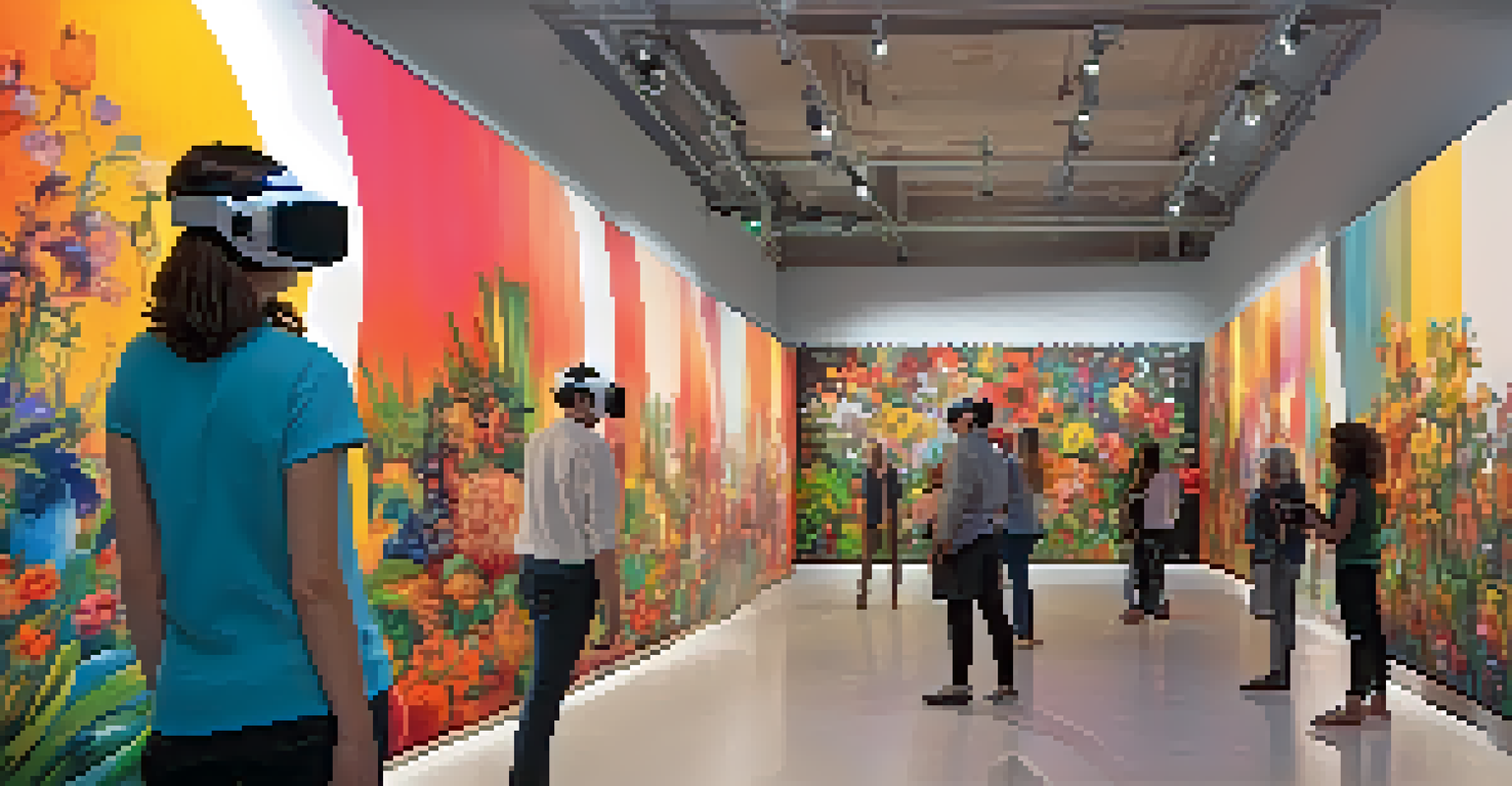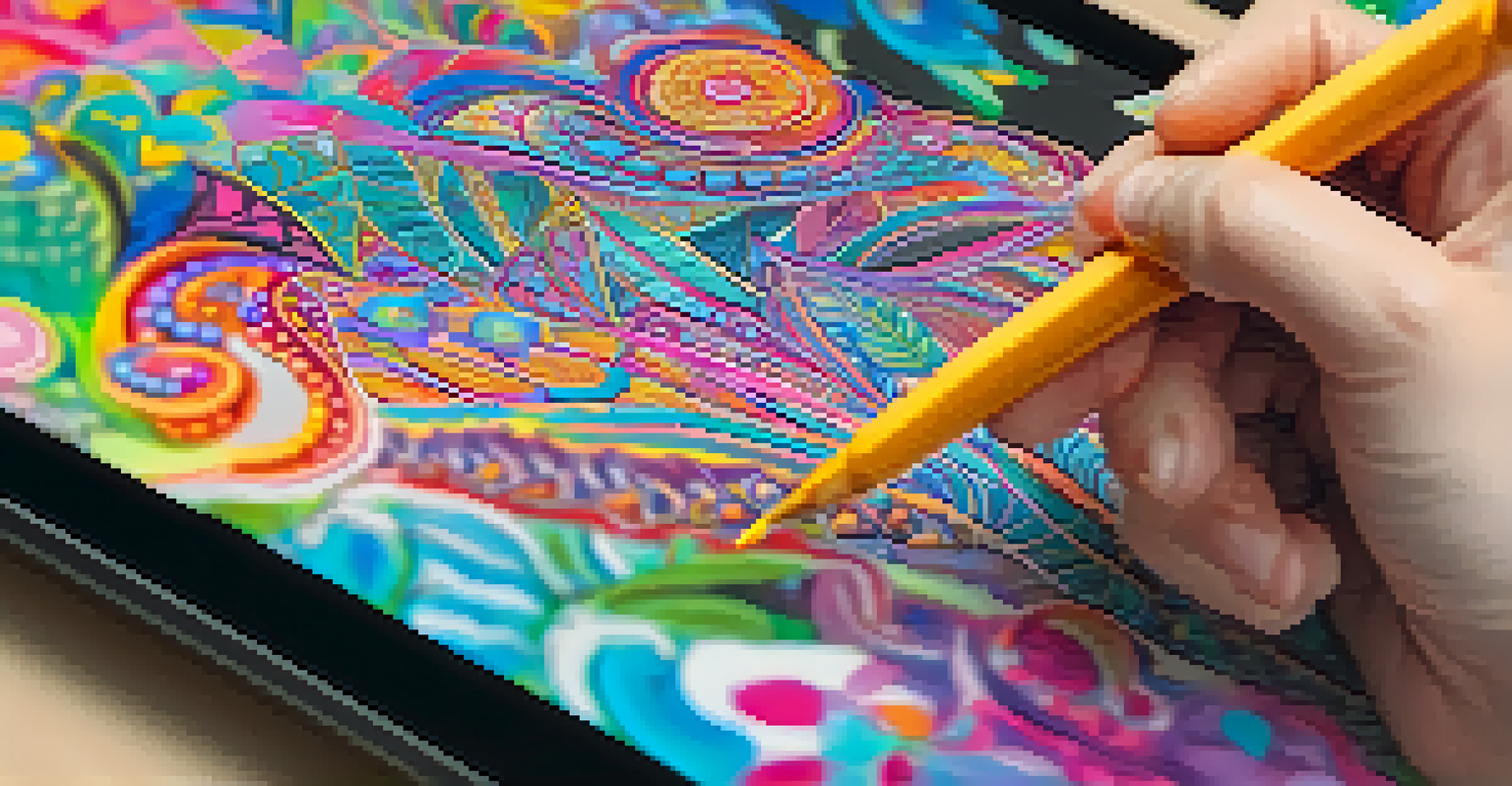The Impact of Digital Art on Modern Cultural Identity Formation

Understanding Digital Art and Its Evolution
Digital art has emerged as a revolutionary form of expression, blending technology with creativity. Unlike traditional art forms, which rely on physical mediums, digital art utilizes software and digital tools to create visually stunning pieces. This evolution has not only expanded the boundaries of artistry but also reshaped the way we perceive culture in the modern world.
Art is not freedom from discipline, but disciplined freedom.
As digital art continues to gain traction, it opens up new avenues for artists to showcase their work globally. Social media platforms and online galleries have transformed the art scene, allowing creators from diverse backgrounds to share their narratives. This democratization of art means that more voices are being heard, enriching the cultural tapestry.
Digital art serves as a mirror reflecting contemporary society, with artists often addressing current events, social issues, and personal experiences. This connection between digital art and cultural commentary fosters a sense of community, as people engage with and interpret these works through their own unique lenses.
The Role of Social Media in Art Dissemination
Social media platforms like Instagram and TikTok have revolutionized the way artists reach their audiences. Artists can now share their creations instantly, gaining visibility and feedback from around the world. This immediacy not only boosts their confidence but also fosters a sense of belonging within the art community.

Furthermore, the viral nature of social media can propel a piece of digital art into the spotlight, making it a cultural phenomenon overnight. For instance, a meme or a viral artwork can spark discussions about identity, representation, and societal issues, creating a shared cultural dialogue. This ability to connect people through art is a significant shift in how cultural identities are formed.
Digital Art Expands Cultural Voices
The rise of digital art democratizes expression, allowing diverse artists to share their narratives globally.
As a result, social media has become a powerful tool for artists to express their cultural identities while simultaneously influencing the identities of their audience. This interplay allows for a dynamic exchange of ideas, where art becomes a catalyst for conversations about who we are and where we come from.
Cultural Identity in the Age of Globalization
Globalization has made the world more interconnected than ever, leading to a blending of cultural identities. Digital art plays a crucial role in this phenomenon by allowing artists to incorporate diverse influences into their work. This fusion often results in unique artistic expressions that reflect the complexities of modern identity.
The painter tries to master the medium in order to express the inexpressible.
As artists draw inspiration from various cultures, they create pieces that resonate with a broad audience, transcending geographical boundaries. This cross-cultural exchange can lead to a richer understanding of different perspectives, fostering empathy and appreciation for diversity. Digital art becomes a tool for exploring and celebrating cultural nuances.
However, this blending can also raise questions about cultural appropriation and authenticity. As we navigate this global landscape, it's essential to engage in conversations about respect and representation, ensuring that digital art contributes positively to the cultural identity formation process.
Digital Art as a Form of Activism
Many contemporary digital artists use their platforms to address pressing social issues, effectively turning their art into a form of activism. This approach not only raises awareness but also encourages audience participation in cultural conversations. For example, artists may create pieces that critique systemic injustices, prompting viewers to reflect on their own beliefs and actions.
By harnessing the power of digital art, activists can reach wider audiences, mobilizing communities around various causes. This newfound visibility empowers individuals to share their stories and experiences, contributing to a collective narrative that shapes cultural identity. In this way, art becomes a vehicle for social change.
Art as Activism in Digital Spaces
Contemporary digital artists leverage their platforms to address social issues, turning their art into powerful activism.
Moreover, the accessibility of digital platforms allows marginalized voices to be heard, enriching the dialogue around cultural identity. As these artists share their unique perspectives, they challenge the dominant narratives, creating space for diversity and inclusivity in the cultural landscape.
The Intersection of Technology and Tradition
While digital art is often associated with modernity, it also intersects with traditional art forms to create innovative expressions. Many artists blend traditional techniques with digital tools, resulting in hybrid artworks that honor their cultural heritage. This fusion highlights the evolving nature of cultural identity in a digital age.
For instance, an artist might take inspiration from indigenous patterns and motifs, using digital media to reinterpret them for contemporary audiences. This approach not only preserves cultural traditions but also makes them relevant in today's context. It emphasizes that cultural identity is not static; it adapts and evolves over time.
Such intersections encourage dialogue between generations, prompting artists to reflect on their roots while exploring new possibilities. This conversation between tradition and technology enriches the cultural landscape, showcasing the dynamic nature of identity formation in the digital era.
The Psychological Impact of Digital Art on Identity
Engaging with digital art can profoundly influence an individual's sense of self and cultural identity. The immersive nature of digital mediums allows viewers to connect emotionally with artworks, often leading to personal reflections on their own experiences and backgrounds. This introspection can be a powerful catalyst for shaping one's identity.
Moreover, the accessibility of digital art means that people from diverse backgrounds can find representations of their own experiences. Seeing oneself reflected in art can foster a sense of belonging and validation, affirming one's cultural identity. This representation is crucial, especially for those who may feel marginalized in traditional art spaces.
Interplay of Tradition and Technology
Digital art intersects with traditional forms, creating hybrid expressions that honor cultural heritage while evolving identities.
As individuals engage with digital art, they may also find inspiration to create their own narratives. This act of creation not only empowers them but also contributes to the broader cultural identity landscape, encouraging a richer, more diverse representation of experiences and perspectives.
Looking Ahead: The Future of Digital Art and Cultural Identity
As technology continues to advance, the potential for digital art to shape cultural identities will only grow. Emerging technologies like virtual reality (VR) and augmented reality (AR) offer exciting new ways for artists to engage with their audiences. These innovations could lead to even more immersive experiences, further blurring the lines between the digital and physical worlds.
In addition, the rise of artificial intelligence (AI) in art creation poses intriguing questions about authorship and originality. As AI-generated art becomes more prevalent, it will be essential to consider how this impacts cultural identity formation. Will these new forms of art dilute personal expression, or will they offer fresh avenues for creativity?

Ultimately, the future of digital art is a reflection of our collective journey in understanding and expressing cultural identity. As we embrace these changes, it's crucial to remain mindful of the values that underpin our artistic practices, ensuring that they continue to foster inclusivity, diversity, and authentic representation.